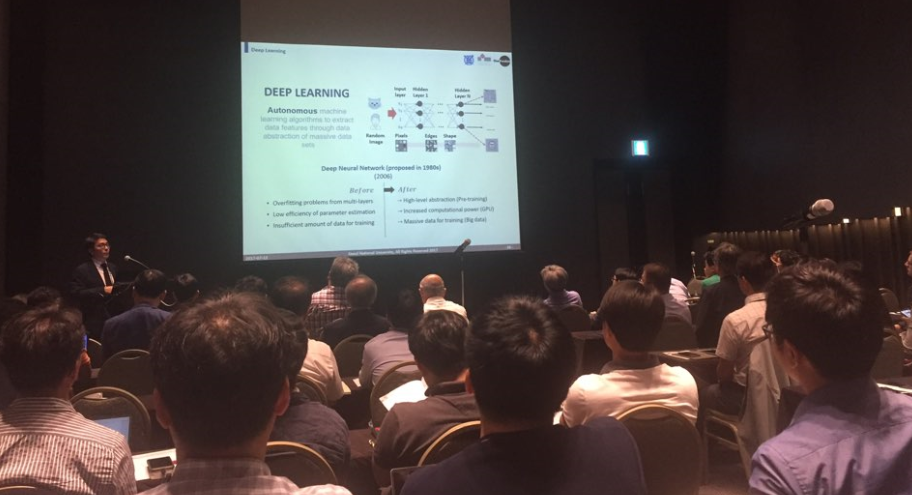Prof. Youn gave an invited talk at "The Asia Pacific Conference of the Prognostics and Health Management Society 2017"
페이지 정보
작성자 최고관리자 작성일 17-07-12 00:00 조회 774회본문

Title:
PHM Frontiers: Physics-based Approach to Deep Learning
Contents:
Journal bearing rotor systems are widely used in various industrial applications. Due to uncertainties, the rotor may not behave as it is expected, and thus accidents may happen, which causes economic losses. To prevent such incidents, diagnosing the health state of rotor systems is of critical importance. Conventional health diagnosis approaches heavily rely on the physical features of the rotor systems, which require large amount of resources to develop. To minimize the amount of time and effort required for the feature engineering process of the rotor systems, the deep learning based feature engineering method is proposed in this paper.
Among various deep learning techniques, convolutional neural networks (CNN), which is known to be powerful in recognizing images, is used. To use CNN, vibration signals are transformed into images using the omnidirectional regeneration (ODR) method. The ODR method can generate virtual vibration signals in any direction from the actual vibration signals acquired from the two orthogonally placed proximity sensors. Then, the virtual ODR signals are transformed into images that sketch vibration signals acquired at all directions. Lastly, the image patterns are recognized by CNN, which replaces the expensive feature engineering step used in the conventional methods. The proposed deep learning based feature engineering is validated with the datasets from the journal bearing rotor test-bed. It is demonstrated that the deep learning based anomaly detection of the journal bearings can substantially improve the efficiency and accuracy, compared to the conventional anomaly detection methods.
- 이전글PHM Colloquium 2017 is held 17.07.11
- 다음글PHMAP 2017 PHM Data Challenge Competition - Winner (1st, 2nd Place) 17.07.14
